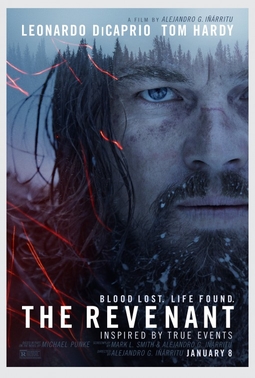Where Was The Revenant Movie Filmed
To bring you the best content on our sites and applications, Meredith partners with third party advertisers to serve digital ads, including personalized digital ads. Those advertisers use tracking technologies to collect information about your activity on our sites and applications and across the Internet and your other apps and devices.
You always have the choice to experience our sites without personalized advertising based on your web browsing activity by visiting the, the, and/or the, from each of your browsers or devices. To avoid personalized advertising based on your mobile app activity, you can install the.
You can find much more information about your privacy choices in. Even if you choose not to have your activity tracked by third parties for advertising services, you will still see non-personalized ads on our site.
By clicking continue below and using our sites or applications, you agree that we and our third party advertisers can:. transfer your personal data to the United States or other countries, and.
process your personal data to serve you with personalized ads, subject to your choices as described above and in.
At the fort with trappers Leonardo Di Caprio and Domhnall Gleeson. Photo by Kimberly French ESTABLISHING THE STYLE Chivo and Alejandro stressed to me the style of this movie would be similar to Birdman where each scene is carefully rehearsed and choreographed to convey the story with minimal cuts.
The camera would be very intimate, many times at minimal focus distance to feel the terror and emotion of each character. We operated a single camera, a signature of Alejandro’s, and no traditional camera dolly was part of our package. Not since film school had I been on a movie without a dolly so I knew it was going to be a very physically demanding experience. The story features Leonardo DiCaprio as Hugh Glass, a respected guide and fur trapper who leads a group of trappers, which includes Tom Hardy, into Indian Territory to bring home their annual pelts.
It’s the American frontier, and conditions are rough. The harsh weather the trappers experienced in the story was part of our journey as well, as we filmed most of the scenes in the Canadian wilderness. Scott with Ryan Monro (dolly grip) executing a shot in the wolf sequence. Photo by Kimberly French HARSH, REALISTIC ENVIRONMENTS We began rehearsing and testing early September in Calgary amidst a major snowstorm and at the start of an early winter. The first day rehearsal involved wearing neoprene waders and boots, working in a river current of knee deep icy water with snow falling. This opening scene included Glass, his son Hawk, and Bridger, a trapper, slowly walking through the water as they spot an elk in the distance.
With a single shot Glass takes the elk down. Within minutes an Indian party descends on the camp. This scene involved about 200 actors as Indians and fur trappers, dozens of horses, bows and arrows, and musket rifles. All was carefully rehearsed and choreographed so we, the audience, experience the battle in real time. “Chivo” Emmanuel Lubezki and Scott in the rain forest of Squamish, British Columbia. Photo by Kimberly French WIDE LENSES TO CAPTURE REALISM The Revenant embraced a different visual language from what I was used to.
Where Was The Revenant Movie Filmed
We used wide lenses—from a 12mm to a 21mm, including the equivalent field of view in 65mm. Movement is exaggerated in a wide lens so camera moves were slow, graceful, and exact. These slow deliberate moves would go from an extreme close-up to a perfectly composed wide, beautiful vista, and back to a close-up.
Where Was The Revenant Movie Filmed Images

The characters in the movie are so emotionally driven that the camera needed to be an emotional extension of them. Shooting with the wide lenses shows an interesting perspective and makes you feel you’re part of the character. You have their panoramic POV.
We’re used to seeing a lot of close-ups and extreme close-ups, but in reality the view a person has is this wide POV. The scope of the scene and the land it encompassed defines the 240:1 aspect that The Revenant utilized. SHOOTING IN STORY ORDER The movie was shot in story order, and part of Alejandro’s directing style is to maintain a natural story rhythm. This allowed the characters to age and physically change as the story progressed. No detail was overlooked, including the optimal time for natural light to shoot the scene. Our emphasis on shooting at the right time of day meant the window of opportunity was small and you had to execute under pressure.
Our ability to do retakes was severely limited and the pressure was on all departments to perform at exact times. It was a scary but exhilarating feeling knowing you have limited time to shoot such an extraordinary scene with so many moving parts.